Of the many things I learn at Cult of Coffee’s coffee cupping in Aberdeen, two stand out.
First, that ‘cupping’ is a coffee industry term for sampling many different types of beans and roasts at the same time – like a wine tasting but with coffee.
And second, that when it comes to tasting coffee, there is nothing like a good slurp.
“Slurping is highly recommended,” says Kornel Kabaja, one of the expert baristas at Cult of Coffee and our host for the event on Thursday evening.
Kornel and his colleagues at the fantastic Esslemont Avenue coffee shop recently started holding cuppings once a month, and I am here with other guests to learn about the complexities of coffee flavours.
Kornel – with an encyclopedic knowledge of the subject – is the ideal host.
“Slurping lets the coffee move around the mouth and distribute around the senses,” he continues, showing us a few slurps of his own.
To my right, three friends, Hannah Fyfe, Logan McArthur and Emma Murray, are also tasting from the nine sample coffees Kornel has brewed for us.
We crouch over the cups, spoon in hand, making unseemly noises.
“This one tastes like wood,” says Emma as she slurps from cup number five.
Indeed, no one likes number five, though there is praise for numbers eight and three.
What quickly becomes evident is the novelty of tasting different coffees one after the other.
Having never been to a cupping before, I find it a unique experience. And it is surprising just how different they all taste.
To my left, Aty, an Aberdeeen University post-grad from Chennai in southern India, is also at his first cupping.
“I thought I’d come and they’d all taste the same,” he says. “But they don’t.”
Graded beans and a £200 cup of coffee
At the top of the table, Kornel is going deep into the intricacies of coffee flavourings.
He holds court wearing a striking black T-Shirt with the words Drink Coffee, Fight Fascism on it.
Later, he tells me he is from Poland, where the anti-fascism movement is strong. Especially amongst the type of people that go to coffee shops.
The T-shirt is also a sign of just how seriously he takes his job.
Though I have to admit that as he went into great detail about such things as the differences between dry and wet processing and anaerobic fermentations, I lost the thread a bit.
As a relatively recent convert to coffee, there is only so much I can take in.
My ears prick up, however, when Kornel moves on to how expensive coffee can get.
Cuppings carried out by the Speciality Coffee Association effectively grade all of the coffee in the world, with 30 lucky batches of beans winning a coveted place at the very top of the tree.
Kornel says those coffees can sell for more than £30 per 100g – Cult of Coffee has only ever had a handful of them in.
There are even more expensive coffees that can sell for about £200 a cup.
Kornel talks about a bean that passes through the digestive tract of the Brazilian jacu bird. In London, an espresso shot of that goes for £150.
Beside me, Aty from India gasps. Earlier, he told me about his favourite coffee – the fresh-brewed cups sold from food carts on the streets of Chennai.
“It’s better than anything you get here,” he said. “And it costs pennies!”
What Starbucks has done for the world of coffee
Kornel brings the cupping to a close by revealing where all the coffee samples came from.
Turns out that cup number five – the woody one that nobody liked – was Starbucks’ signature roast.
Apparently, Starbucks over-roasts its beans so it can keep its coffee flavour consistent across the world.
This is according to Kornel, anyway, who I assume is no Starbucks fan.
But the Pole won’t be so easily pigeonholed. He tells me about the great work Starbucks has done to bring speciality coffee into the mainstream.
Still, he doesn’t like how much milk high-street chains use in their coffee.
“To me, a latte is a cocktail,” says Kornel. It’s a phrase I expect one day to feature on one of his T-shirts.
Cult of Coffee is at 28 Esslemont Avenue in Aberdeen. Its coffee cuppings are held about once a month and can be signed up to through the shops Facebook page here. They cost £4 to join, and the entry fee can go towards the cost of a bag of coffee purchased on the night.
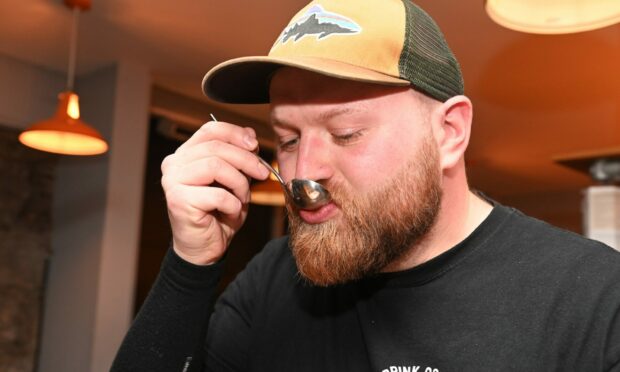

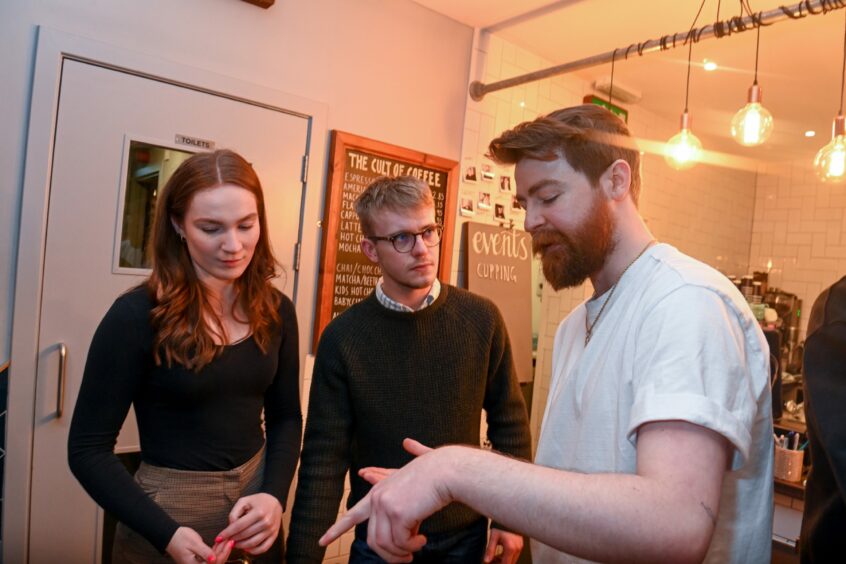


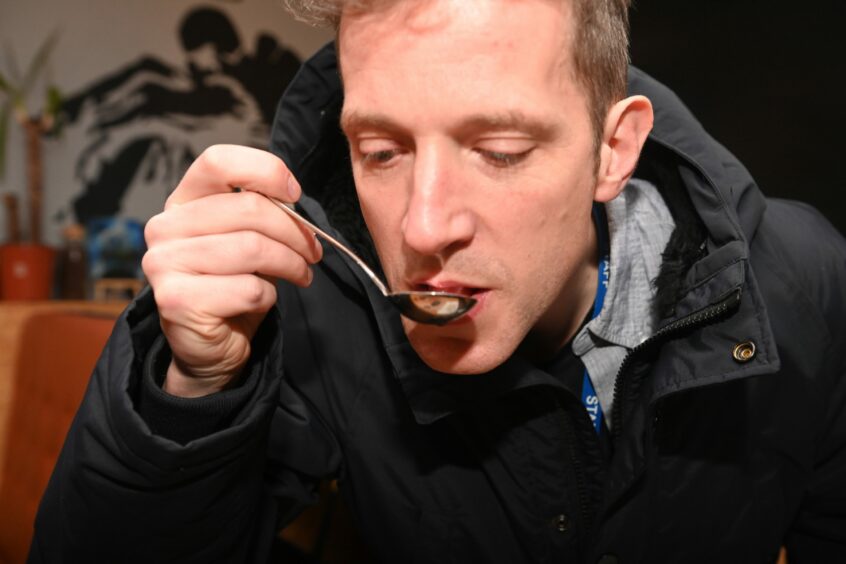
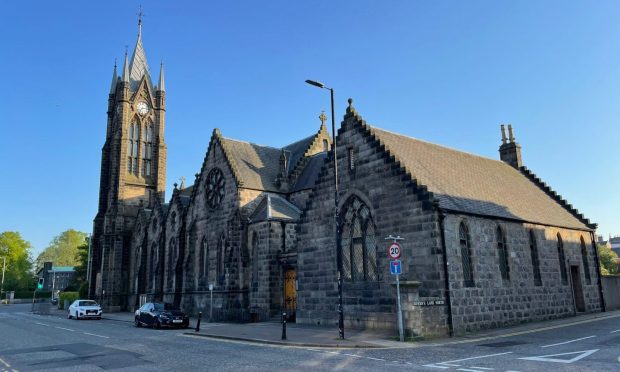

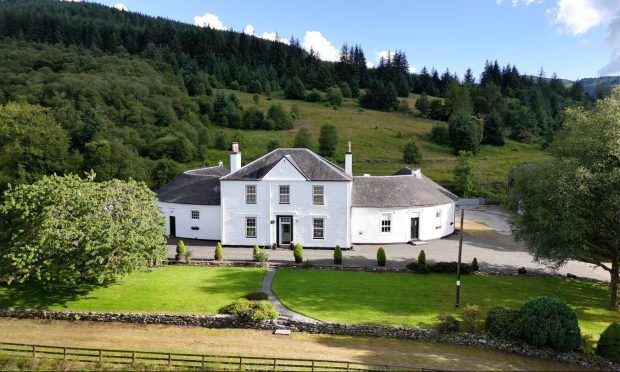
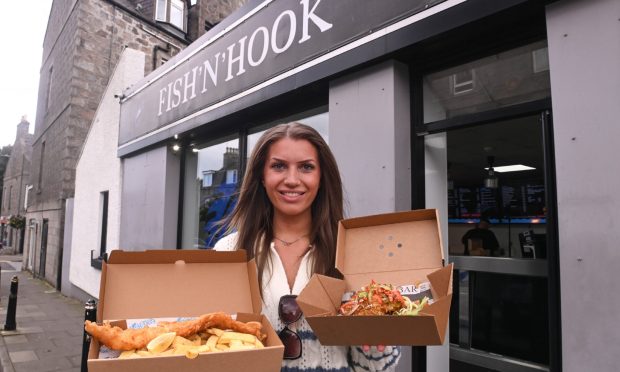
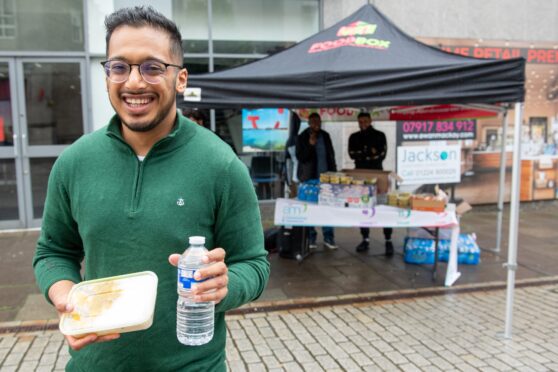
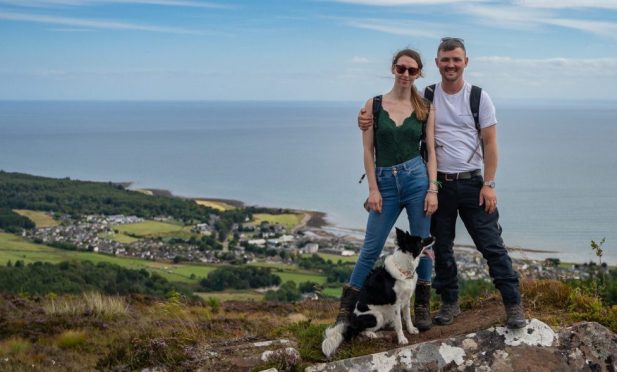
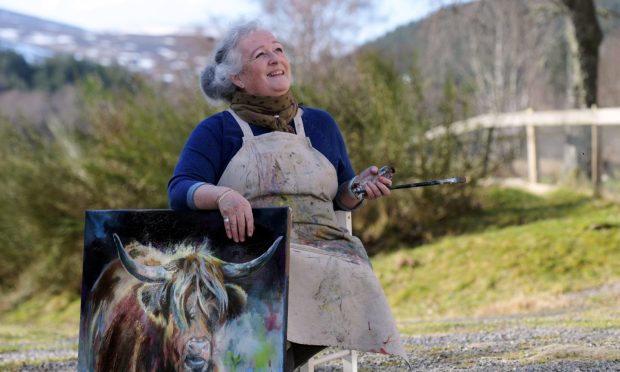
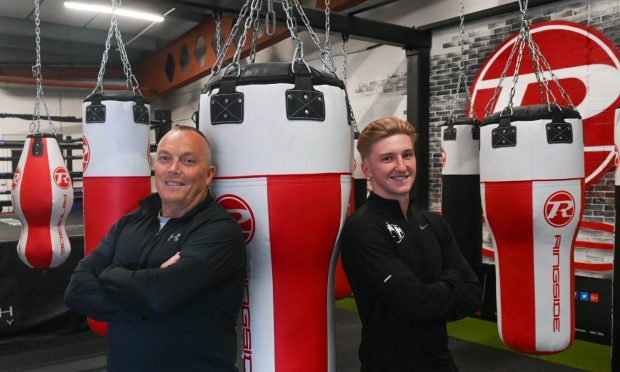
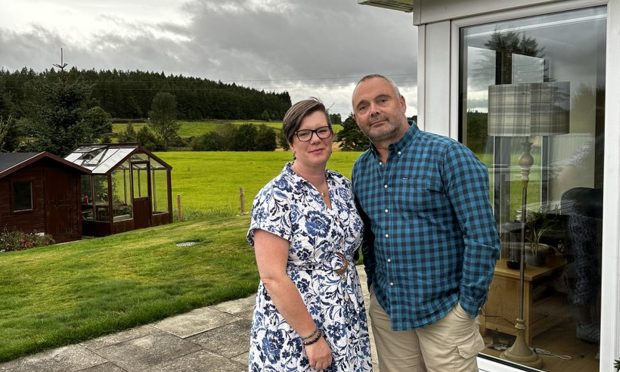
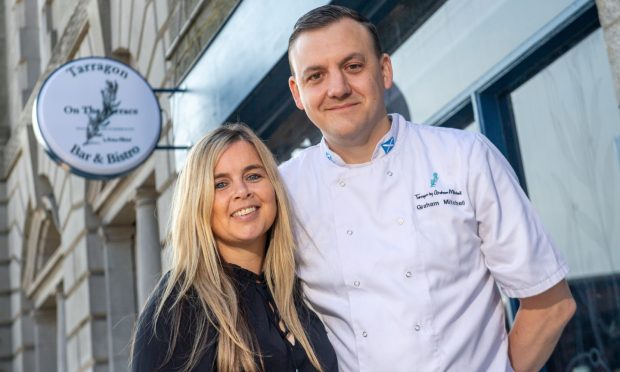
Conversation